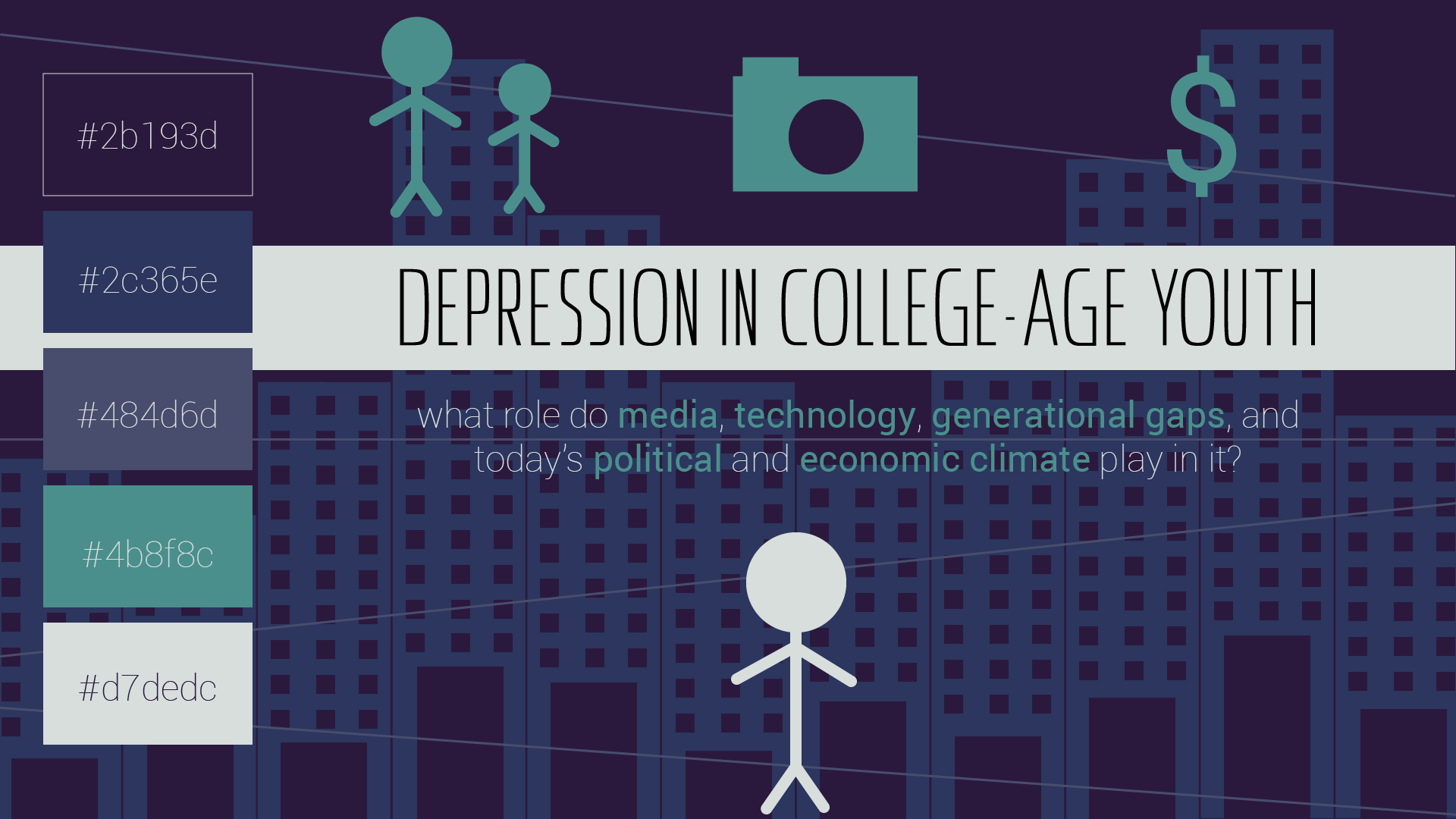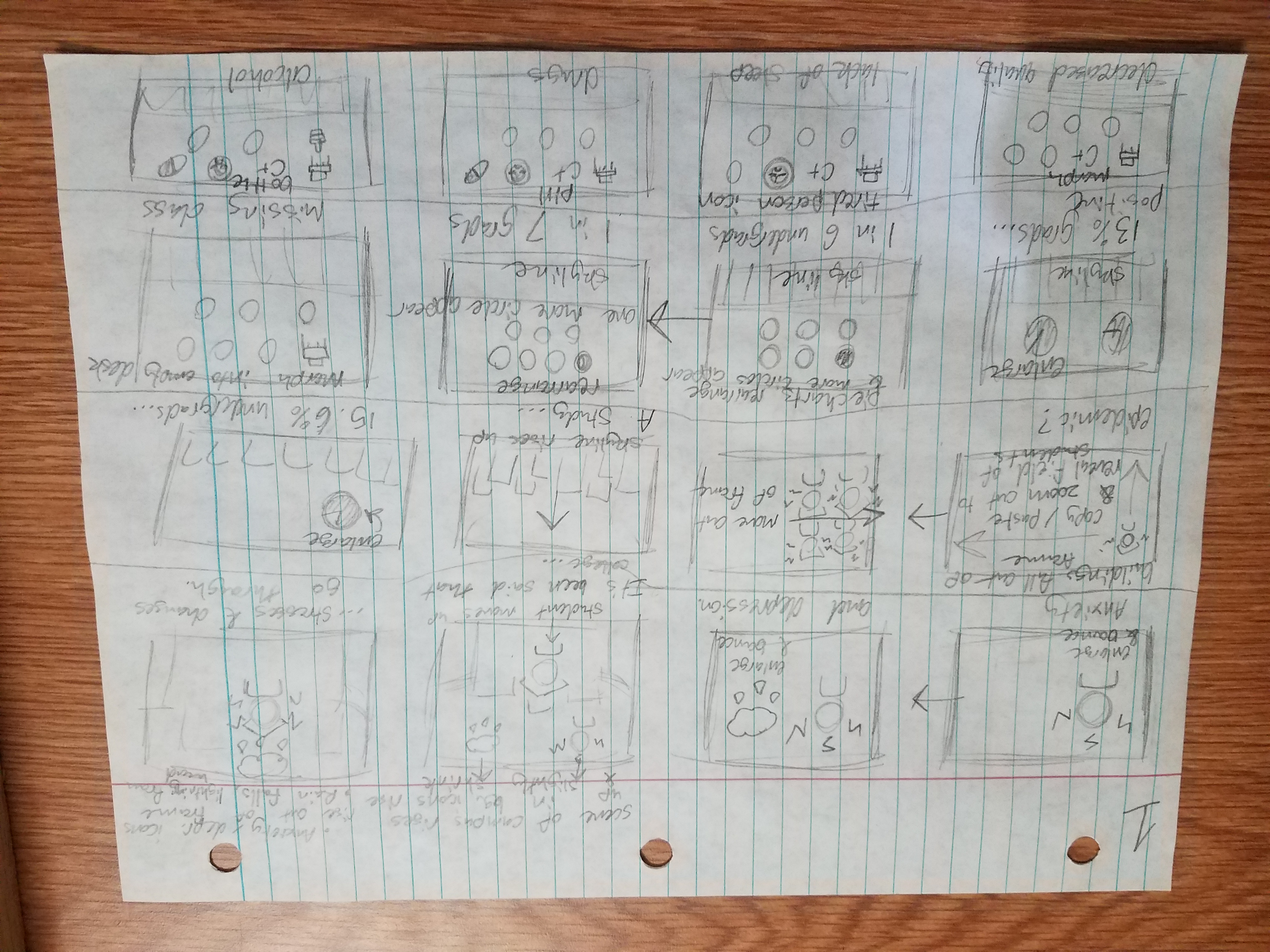“Invisible Illness” is a collaboration between myself and Bei Deng. It's a short PSA raising awareness of depression and anxiety specifically in the college environment. It raises the importance of the issue of these mental illnesses by detailing how they impact a college student’s academic performance and social life, and encourages community and destigmatization.
We came to the consensus of doing a project on anxiety and depression based on connections between different topics that we wanted to do in the beginning. I already had outside research about the impact of fiction and pop culture on real life ideologies and action, and Bei wanted to do something about financial inequality. Our aim was originally to connect the two and mention them as factors in college depression and anxiety, however we ended up simplifying our approach to just address the illnesses.

We chose to keep our video simple and accessible in order to raise awareness without overwhelming the viewer. Mental illness is a stigmatized topic, and public conversations about it only tend to happen after an event like a mass shooting, which does not help destigmatize it. We wanted to portray mental illness in a concise, audience-friendly manner in order to make the subject easier to talk about without mitigating its severity.
Our aim was to strike a balance between serious and light. We chose to use cool colors because the topic of depression and anxiety can be a somber one, and warm or “happy” colors would not have been appropriate. However, we chose to make our colors bright anyway to keep the video from looking too somber and keep with our goal of being accessible. This goal was furthered by our use of iconography. Our various characters and dynamic backdrops for them were intended to be interesting, perhaps even enjoyable to watch, and to make the topic of mental illness seem less intimidating. However, we kept our fonts modern and clean to keep our video from looking overly playful, because the topic at hand is still one of great consequence.
At first, we had some trouble, seeing as our group originally consisted of three people and we were having difficulties coordinating our schedules and reconciling our design ideas. However, we eventually found that we were able to divide up the work quite efficiently between the two of us. We had each done a third of the video (myself the first, Bei the third), and when our team became a pair, we evenly split the remaining third between the two of us.


I built the city skylines, doctor’s office, depression cloud, anxiety lightning, and iconography for the consequences of mental illness. Bei built the characters, the 2D college building, and the icons representing help for mental illness. The script was a collaborative effort. I read the script and edited the recording. Overall, the two of us were an effective pair and were able to work well together.
I had never used After Effects before beginning this project, and was fairly intimidated by it at first. However, now I feel I have a solid grasp on the software, and will be able to continue to make increasingly complex animations with it going forward. I think that between myself and Bei, we were able to make a video that was simple, yet effective. We aimed to create something that would stress the importance of issues of mental health, without being too depressing in itself. Every design choice we made was with a purpose, which is the largest thing that I will take away not just from this assignment, but from this class as a whole.
If I were to do anything differently, I simply would have had better time management. If I were more on top of things from the beginning, I feel that our final product could have been stronger and planned out better. A lot of time was lost to difficulties in communication, but given the challenges that Bei and I faced, I feel that we were able to create an effective video that illustrates the severity of depression anxiety while also inspiring a feeling that recovery is possible.
Eisenberg, Daniel, Gollust, Sarah E., Golberstein, Ezra, & Hefner, Jennifer L. (2007, Oct). Prevalence and correlates of depression, anxiety, and suicidality among university students. American Journal of Orthopsychiatry, 77, 534-542. DOI:10.1037/0002-9432.77.4.534
Eisenberg, Daniel, Golberstein, Ezra, & Gollust, Sarah E. (2007, Jul). Help-Seeking and Access to Mental Health Care in a University Student Population. Medical Care, 45, 594-601. DOI:10.1097/MLR.0b013e31803bb4c1
Kristian, Cedric. (2015, Jan 5). Memories [Audio file]. YouTube. Retrieved from https://www.youtube.com/watch?v=4vIOtGLmAYw
National Institute of Mental Health. (2015, Nov). Depression and College Students: Answers to college students' frequently asked questions about depression [Brochure]. Retrieved from http://www.csus.edu/aba/police/documents/depression-college-students.pdf
Wood, Lisa, Birel, Michele, Alsawy, Sarah, Pyle, Melissa, & Morrison, Anthony. (2014). Public perceptions of stigma towards people with schizophrenia, depression, and anxiety. Psychiatry Research, 220, 604-608. DOI:http://dx.doi.org/10.1016/j.psychres.2014.07.012